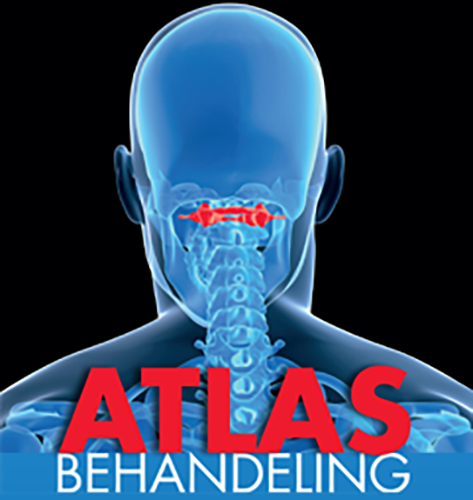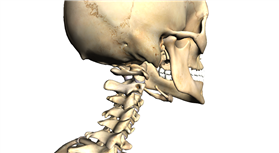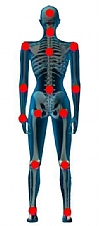 "" alt="atlasbehandeling">
"" alt="atlasbehandeling">
Un massage en profondeur avec un dispositif vibrant peut déboucher sur une amélioration structurelle et fonctionnelle qui renforce la capacité d’autoguérison.
The muscles heath that connects the base of the skull with the uppermost neck vertebrae has a number of special features. The deeper layers are difficult, if not impossible, to reach manually.
In those deeper layers there are an exceptionally large number of small sensory organs – also known as receptors or sensors – that register in what position the body is in space and also how the muscles and tendons of the entire body are being tensed.
These receptors are in contact with the balancing organ of the inner ear and have direct connections with certain centres in the brain, which are responsible for orientation in space, and in so doing influence the rough and fine locomotor system.
They are also in contact with areas of the brain where pain signals from the locomotor apparatus are processed. So these receptors are an observation organ that sends information to the brain, where this is converted into certain reactions.
Atlas (the first cervical vertebra, supporting the globe of the head) treatment makes it possible to correct and redirect this information-processing towards more relaxed physical and psychological functioning.



"Slight disbalancing with serious consequences"
With many people, their head is to a greater or lesser extent asymmetrically positioned on the first cervical vertebra. This is often the result of rough manipulation during childbirth (certainly in cases where the umbilical cord is wrapped round the neck, or where a suction cup or forceps were used) or subsequent traumata (mechanical or psychological), which have provoked a reflex muscle-defence reaction in the upper neck muscles.
Because these upper neck muscles initiate and coordinate the entire upright position, small deviations at this high level lead to compensating positions with extra muscle tension at various points lower down in the body.
Depending on the seriousness of the misalignment and deteriorations caused by constitution and trauma (concussion or whiplash, as well as cumulative psychological stress), this extra tension in the muscles results in symptoms of varying intensities.
In addition to extra muscle tension, an atlas which is not properly positioned can also result in a narrowing of the opening between the skull and spinal cord canal, which is then responsible for increased pressure on the cerebral membranes [dura and pia mater] and the vertebral arteries, and unsteady pulsation of the spinal cord fluid. These factors can play a major role in several types of headache, irritation of the cranial nerves, spinal cord irritation in the lower back, and so on.
The atlas not only supports the skull, but also ensures the suspension, balance and tonus of the spinal column and the skeleton as a whole.
This means that minimal displacements of the atlas are responsible for lack of balance and compensations in the body position.
This subsequently contributes to symptoms such as: headache, migraine, neck pain, stiff neck, back pain, lumbago, hernia, scoliosis, blocked spinal nerves, pain in the hip joints, knee pain, meniscus problems, differences in leg length due to crooked pelvic position, not forgetting such things as concave feet and hammer toes.
